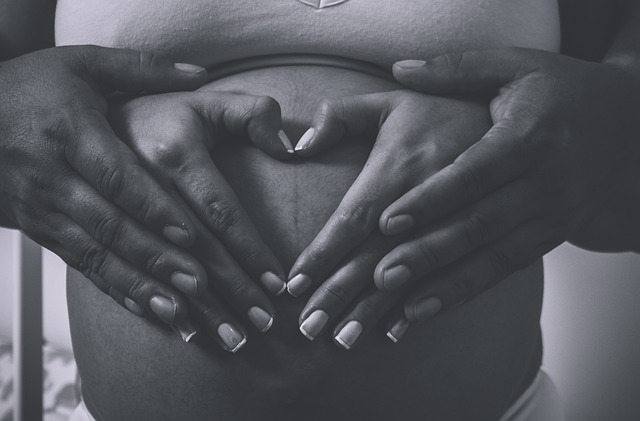Every parent understands that caring for a sick child is incredibly stressful. Even minor illnesses, like the common cold, can feel overwhelming when it’s your little one who is suffering. Add a fever into the mix, and the situation can quickly escalate.
Managing fevers in young children often raises a host of questions: At what temperature do we consider it a fever? How high is too high? Should I administer Tylenol, ibuprofen, or both? How frequently can I give medicine? And what if the fever doesn’t respond to treatment? Thankfully, we have access to temporal thermometers and nurses we can call for guidance. However, one alarming symptom of fever that I wasn’t prepared for was the febrile seizure.
It was a typical afternoon at our home. My sons, ages three and eighteen months, were playing in the living room while I busily prepared our bags for a day at the zoo. My husband was loading the cooler into the car when my youngest began to fuss. I assumed he was just tired and close to nap time.
We paused our plans to comfort him. When I picked him up, I noticed he felt warm, so I checked his temperature. It registered around 100 degrees, prompting me to give him some Tylenol and settle into the rocking chair with him, not thinking much of it.
As he began to drift off, his little eyes closed and his body relaxed. I was starting to doze off, too, when he suddenly twitched in my arms. It startled me, but I brushed it off. Then it happened again, but this time, something felt off. I felt his body stiffen and looked down to see his eyes rolled back in his head, his back arched, and his body trembling. My heart raced—this was not normal.
“Mark! Come here now!” I called for my husband. He rushed in, horrified by the sight. “I think our baby is having a seizure!” I handed our son to him and instructed him to keep an eye on him while I dialed 911. My older son was becoming increasingly anxious, asking, “What’s wrong with baby?” My husband tried to reassure him, “It’s okay, buddy. He’s alright.” I wasn’t convinced. The seizure seemed to stretch on forever. The 911 operator calmly guided me through the process: lay him on the floor away from any hazards, let the seizure occur naturally, and don’t put anything in his mouth. I was to time the seizure and note how long it lasted. Help was on the way.
Although the ordeal only lasted a few minutes, it felt like an eternity. When the seizure finally ended, my baby lay limp on the floor. While I knew he was alive, fear gripped me. Would he be the same joyful child afterward? I had read that fevers could be dangerous for young children, but I never anticipated this. Why wasn’t I informed?
By the time the paramedics arrived, we had calmed down a bit. My son was starting to stir, albeit sluggishly. Since I was too shaken to drive, we took the ambulance to the children’s hospital. Upon arrival, they took his temperature—it was a staggering 104 degrees. They administered fluids and more medication to lower his fever, and tested him for the flu. They also explained febrile seizures to us.
Febrile seizures are convulsions triggered by fever. At the time of my son’s incident, there was ongoing debate about whether the seizure was due to the fever reaching a high temperature or rising too quickly. Statistics indicate that one in twenty children will experience a febrile seizure, making it surprising that many parents are unaware of this common occurrence. Fortunately, most children outgrow them by age five.
My son, now seven, hasn’t had a seizure in years, though he experienced one nearly every time he had a fever as a toddler. Once we learned how to respond, the fear subsided significantly.
What to Do If Your Child Has a Seizure
If your child has a seizure, remember: stay calm. The American Academy of Pediatrics recommends laying your child down in a safe space, free of obstacles. Position them on their side to keep the airway clear. Do not attempt to place anything in their mouth. Timing the seizure is crucial—most febrile seizures last less than three minutes. If it lasts longer or your child doesn’t regain consciousness, call 911 immediately. After the seizure, your child will likely be drowsy. When they are fully awake, you may want to consult your pediatrician before administering any fever-reducing medication.
Although febrile seizures can be frightening, they are quite common and typically harmless. Knowing how to act when faced with a seizure can ease the anxiety for parents and caregivers. If your child is diagnosed with febrile seizures, ensure that everyone who cares for them is informed and prepared. Our experience may help you feel more equipped if you ever face this situation.
For more insights related to family health and well-being, consider exploring our blog post on fertility boosters for men, where you can find valuable information here. Also, for excellent resources on pregnancy and home insemination, check out this link. If you want to learn more about febrile seizures and related topics, visit this informative page.
Summary
Febrile seizures, often occurring in young children with fever, can be alarming for parents. Understanding the signs and knowing how to react can help reduce fear during such incidents. Most children with febrile seizures will outgrow them, and awareness can empower caregivers to respond effectively.
